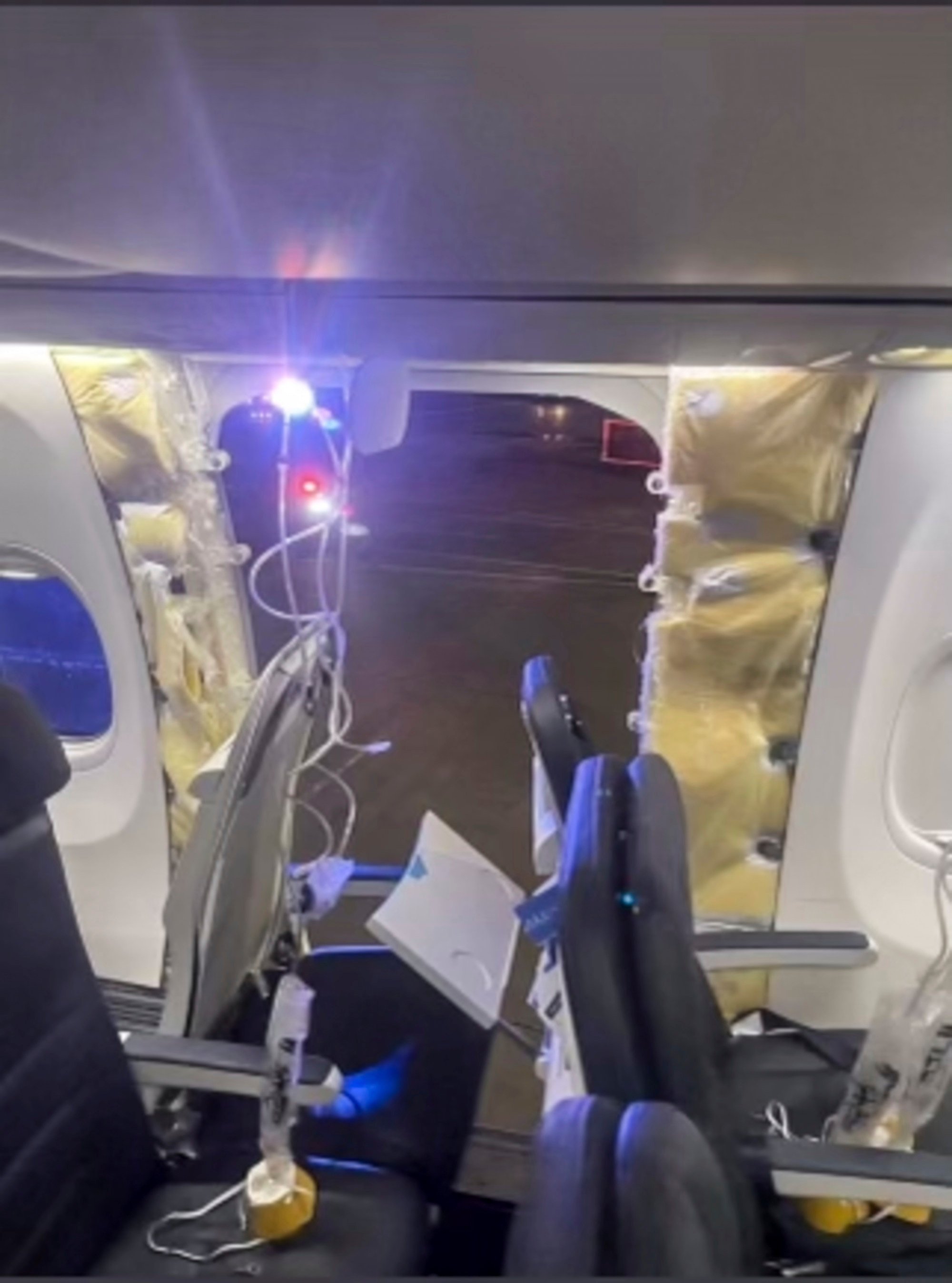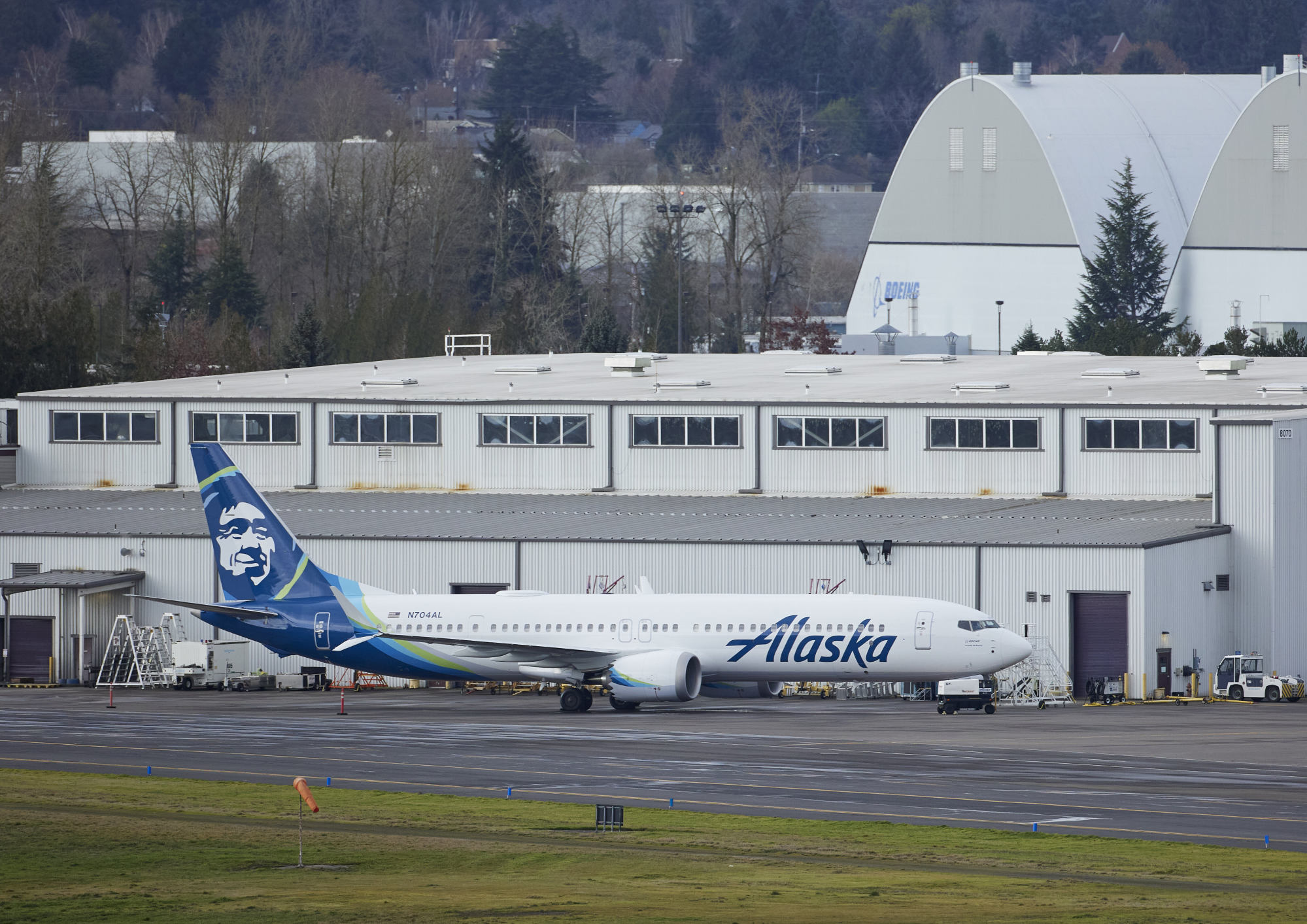The Federal Aviation Administration (FAA) on Saturday grounded 171 Boeing 737 MAX 9 jetliners for safety checks after the emergency landing of the plane, which had been in service for just eight weeks.
A piece of fuselage tore off the left side of the jet as it climbed after take-off from Portland, Oregon, en route to Ontario, California, forcing pilots to turn back and land safely with all 171 passengers and six crew on board. Some minor injuries were reported, Homendy said.

The FAA did not rule out further action as a probe began into the potential structural failure that left a rectangular hole in an area of fuselage reserved for an optional extra door but which is plugged and deactivated on Alaska Air’s aircraft.
Investigators will look at maintenance records, the pressurisation system and the door components. Homendy said. “We’ll go where the investigation takes us,” she said, asking for the public’s help in recovering the missing door plug, believed to be in a suburb west of Portland.
Homendy praised the FAA for swiftly grounding the MAX 9 to “ensure continued safety”.
US grounds Boeing 737 MAX 9s after window blowout on Alaska Airlines flight
US grounds Boeing 737 MAX 9s after window blowout on Alaska Airlines flight
Alaska Air said it had halted flights by 18 of its MAX 9 planes that it had resumed using Saturday after recent in-depth inspections. The airline said it was in discussions with the FAA “to determine what, if any, further work is required before these aircraft are returned to service”.
The FAA could announce inspection requirements as early as Sunday, officials said.
The Boeing 737 MAX 9s fitted with a special door replacement “plug” cannot fly until they are inspected and repaired if necessary, the FAA said.
A section of the fuselage reserved for the optional door had vanished, leaving a neat door-shaped gap.
The extra door is typically installed by low-cost airlines using extra seats that require more paths for evacuation. However, those doors are permanently plugged, or deactivated, on jets with fewer seats, including those of Alaska Air.
The fuselage for Boeing 737s is made by Kansas-based Spirit AeroSystems, which separated from Boeing in 2005. Spirit manufactured and installed the particular plug door that suffered the blowout, a source told Reuters on Saturday.

The MAX 9 represents about 220 of the 1,400 MAX jets delivered so far and most of them have the deactivated door, meaning they are potentially covered by the order.
Boeing said it supported the FAA decision.
MAX planes were grounded worldwide for 20 months after crashes in Ethiopia and Indonesia, linked to poorly designed cockpit software, killed almost 350 people about five years ago.
Alaska Air and United Airlines are the only US carriers using the MAX 9. Alaska Air cancelled 160 flights on Saturday, or 20 per cent of scheduled trips, while United canceled 104 flights or 4 per cent of departures.
Alaska Air said the travel disruptions from the grounding were expected to last until at least the middle of the week.
China wants its home-grown jet to go abroad, seeks European approval of C919
China wants its home-grown jet to go abroad, seeks European approval of C919
Boeing is awaiting certification of its smaller MAX 7 and larger MAX 10, which are needed to compete with the Airbus A321neo model.
Boeing has suffered numerous production issues on the MAX planes in the years since the crashes. The manufacturer on December 28 urged airlines to inspect all 737 MAX airplanes for a possible loose bolt in the rudder control system.
“We are declaring an emergency. We do need to come down to 10,000,” the pilot added, referring to the initial staging altitude for such emergencies, below which breathing is considered possible for healthy people without extra oxygen.

